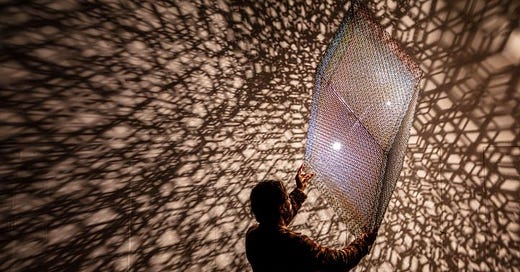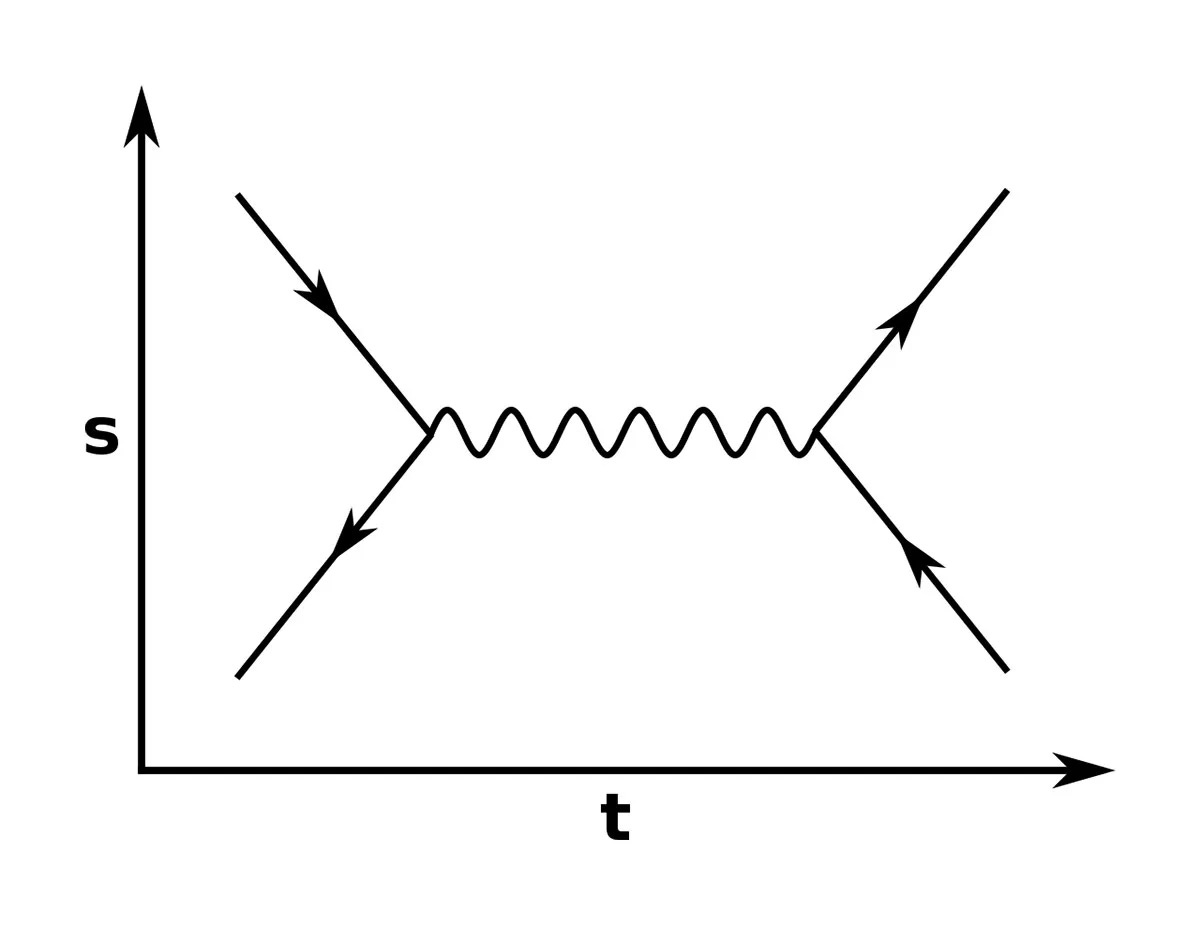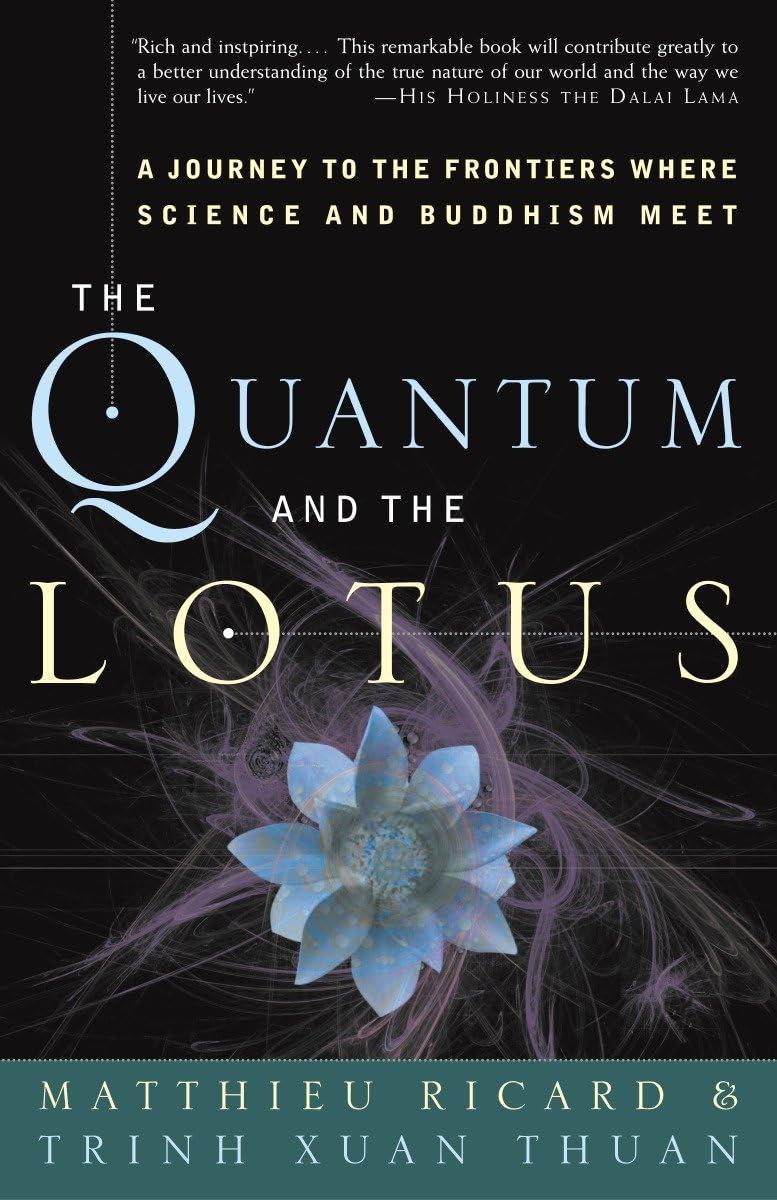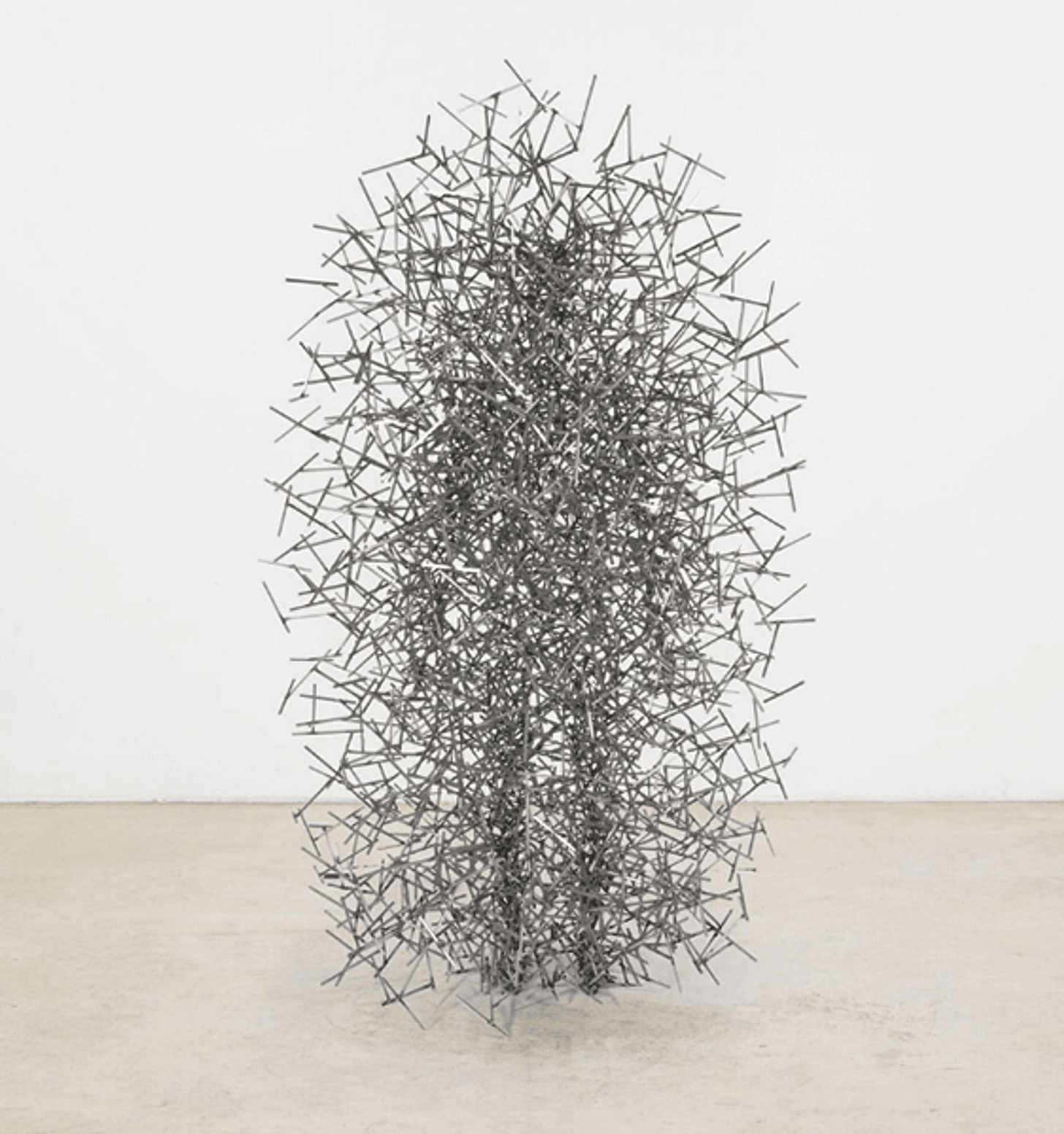Introduction - a quantum exploration
Quantum physics describes the workings of the Universe at the level of the tiny particles, such as electrons and photons of light, that make it up. Most of our everyday experiences come from the interaction of matter particles with each other and with light. Quantum theories suggest that we, and everything that exists is interconnected as subparticles which vibrate and make waves.
This detailed theory would win the Nobel Prize in Physics for Richard Feynman, Julian Schwinger, and Sin-Itiro Tomonaga. Much of their original thinking involved complex mathematics, as it was necessary to deal with a vast number of potential interactions, each with different probabilities.
This is a direct connection to many of the teachings in ancient knowledge , religion and spirituality; and an eerily close and direct connection to the latest, impossible to comprehend technology which is revolutionising all aspects of medicine, communication, computing and power generation.
We need more avenues for artists, philosophers and creatives to inform and inspire research in science and frontier technology. Perhaps artists can help us comprehend the science. And perhaps scientists can use art to clarify their ideas.
So here is an exploration of where quantum mechanics intersects with art, imagination & wisdom.
Introduction - a quantum exploration
The Intersection of Quantum Physics & Art: Ila, The Moth, Conrad Shawcross, Libby Heaney
Quantum Reality & Ancient Wisdom
Distinguishing Science from Pseudoscience
Quantum Biology, & closing
Why is Quantum important?
This knowledge had profound effects in science and technology. Quantum mechanics led to the development of things like lasers, light-emitting diodes, transistors, medical imaging, electron microscopes, and a host of other modern devices.
To make it simple: your mobile phone would not exist without the science of quantum mechanics!
Why is it fascinating ?
Quantum physics opens up windows into seemingly improbable worlds (literally). From explaining black holes to the concept of the multiverse.
From powering space travel and GPS devices, to opening up ideas of other layers of consciousness and reality to the potential for teleportation - it is about Magic in the best of scientific ways.
Take me away …
This year, a team of physicists at the University of Oxford achieved a teleportation breakthrough; the Oxford scientists used quantum entanglement to almost instantaneously send basic information between computers.
When data travels long distances under this principle, "quantum teleportation" is said to have occurred. In the experiment, the light particles remained in the same place, but entanglement allowed the computers to "see" each other's information and work in parallel.
This is not to be confused with the conventional idea of teleportation, which involves a hypothetical immediate exchange of matter in space. And yet, its both conceptually complex and also freaking fascinating!
Read more here: Breakthrough as Oxford scientists achieve teleportation with quantum supercomputer, The Independent 2025
The Intersection of Quantum Physics & Art
Art offers powerful tools to visualise and interpret the abstract concepts of quantum mechanics, while quantum principles inspire new forms of artistic expression that explore the fundamental nature of reality.
Visualising the Quantum Realm
Quantum physics investigates phenomena at the subatomic level that challenge our intuitive understanding of the world. For example, particles can exist in multiple states simultaneously (superposition), influence each other instantaneously across vast distances (entanglement), and exhibit characteristics of both particles and waves depending on how they are observed (wave-particle duality).
These phenomena are mathematically describable but are difficult to render visually or as images. A small group of artists have taken up the challenge of translating these abstract concepts into visual forms accessible to human perception, and more are inspired by quantum theories in the work they present.
Art as a Tool for Understanding
Art & Quantum mechanics have been conceptually linked since the early 20th century, when quantum mechanics first emerged and began transforming our understanding of physical reality.
This period also saw revolutionary developments in modern art, with movements like cubism, futurism, and abstraction challenging conventional representations of reality in ways that parallel quantum physics' challenge to classical physics.
Visualising quantum science
Physicists increasingly rely on imagination and intuition—traditional domains of artistic creation—in their efforts to comprehend quantum phenomena. For example, Richard Feynman's diagrams, which represent quantum interactions through visual symbols, exemplify how visualisation aids in conceptualising complex quantum processes.
Feynman realised that these interactions could be represented by simple diagrams – patterns that define the interplay of light and matter. Not only did they make QED more comprehensible, Feynman diagrams also provided a visual tool for making otherwise impossible calculations practical.
Each diagram combines a series of lines where, for example, straight lines represent matter particles and wavy lines are photons. These are patterns in space-time, but they represent the interaction of particles. A simple example might show two electrons repelling each other electromagnetically, with a photon passing between them as a force carrier.
Feynman’s diagrams were necessary to reflect the strange behaviour of quantum particles, which bears no resemblance to the action of the physical objects that are made up of them. But because of the oddities of quantum physics, an apparently simple action can result in a whole plethora of diagrams.
A simple Feynman diagram, showing particles represented by straight lines and a photon represented by a wavy line. In this case, the vertical axis is space and the horizontal axis is time © Romainbehar, CC0, via Wikimedia Commons
And so following this, Quantum principles like entanglement and uncertainty have inspired artwork that reflects interconnectedness and fluidity.
Artists & quantum
Many brainy and brilliant artists artists draw on these concepts to create works that challenge traditional notions of separation, determinism, and objectivity. By incorporating quantum principles into their creative process or thematic content, artists explore new ways of representing reality that acknowledge its fundamentally interconnected and probabilistic nature.
ILĀ*
ILĀ* is a multifaceted transgender mixed race artist, producer and creative director.
They work with art, quantum and music, focusing specifically on the integration of quantum computing and quantum phenomena into musical composition and performance.
Their explorations investigate how quantum principles can transform our understanding and creation of music, potentially opening new sonic territories that reflect quantum indeterminacy and entanglement. By applying quantum concepts to musical creation, ILĀ extends the influence of quantum thinking beyond visual art into the realm of auditory experience.
https://www.hausofila.com/
ILĀ is currently working on several projects exploring quantum computing and quantum phenomenon in musical composition and performance.
Moth
Moth is a quantum technology company building tools and technologies for creative and cultural production.
Moth approaches the quantum-art intersection from a technological perspective, functioning as a quantum technology company developing tools for creative and cultural production. Their focus spans music, gaming, and visual media, seeking to harness quantum principles and technologies to enable new forms of creative expression.
Moth was formed around a diverse team of scientists, artists, curators, engineers, and entrepreneurs, many of whom have been exploring the transformative potential of quantum technologies in music, gaming, and the arts for over a decade. Our team is composed of experts from various fields, including quantum science, engineering, business, and the creative industries.
Moth's distinctive feature is its diverse team, which includes scientists, artists, curators, engineers, and entrepreneurs, many of whom have been exploring the transformative potential of quantum technologies in creative fields for over a decade. This multidisciplinary composition allows them to address both the technical and artistic challenges of quantum-inspired creation, developing tools that bridge scientific innovation and artistic expression.
Conrad Shawcross
This artist connects the perpetual study of time, space & reality through sculpture. Imbued with an appearance of scientific rationality, Conrad Shawcross’s sculptures explore subjects that lie on the borders of geometry and philosophy, physics and metaphysics.
Attracted by failed quests for knowledge in the past, he often appropriates redundant theories and methodologies to create ambitious structural and mechanical montages, using a wide variety of materials and media, and often working on an epic scale.
Different technologies and natural forces inspire his forms, but his mysterious machines and structures remain enigmatic, filled with paradox and wonder. Some have an absurdist melancholy feel, while others tend to the sublime.
As Conrad explains: "My practice has always been very empirically led. We create prototypes, research parameters, and conduct experiments for every new idea. We approach problems in a rational, didactic way and pick apart any holes until we have a solution, but the final intent is irrational, poetic."
Conrad studied art at the Ruskin at the University of Oxford and so was always surrounded by these other subjects, always intrigued by the meaning of number, rule-based art, and creating systems that appear to be rational, but in fact are quite metaphysical or poetic.
I loved this conversation betwen the great physicist Carlo Rovelli and Conrad Shawcross, who discuss the concept of the quantum as an enigmatic and fiercely debated fundamental notion that a physical property can be quantised.
Quantum computing, quantum sensing, and other emerging technologies offer new tools for artistic expression that directly implement quantum principles rather than merely representing them.
Carlo Rovelli and Conrad Shawcross explore the idea of the quantum - the enigmatic and fiercely debated fundamental notion that a physical property can be quantised. https://www.youtube.com/@TheRoyalInstitution
Quantum-Glossay
Here is a very helpful Quantum Glossary from the UK arts charity the Space
Quantum computing – quantum computing harnesses the quantum physical laws of microscopic objects, such as atoms and photons, to process information using phenomena like superposition and entanglement.
Qubit – a quantum bit (or qubit) is the quantum equivalent of a binary bit. It is the simplest unit of quantum information. Unlike a bit which can only be in a 0 or 1 state at any instance, a qubit can be in a superposition of 0 and 1 simultaneously.
Superposition – Superposition is the ability of a quantum system to be in multiple states at the same time until it is measured. For instance an atom may be spinning up and down at the same time.
Entanglement – is the ability of two or more quantum objects to jointly share properties such that it is impossible to describe each object independently of the other(s).
Block chain – blockchain is a system of recording information in a way that makes it difficult or impossible to change, hack, or cheat the system. A blockchain is essentially a digital ledger of transactions that is duplicated and distributed across the entire network of computer systems on the blockchain.
NFTs – Non fungible token (or NFT) is a unit of data stored on a digital ledger, called a blockchain, that certifies a digital asset to be unique and therefore not interchangeable.
Python – Python is an interpreted high-level general-purpose programming language.
Libby Heaney
Featured in this glossary is the British artist and quantum physicist Libby Heaney, who is known for her pioneering work on AI and quantum computing.
Libby stands out as a British artist and quantum physicist recognized as the first to use quantum computing as a functioning artistic medium. Her dual expertise allows her to work with genuine quantum systems rather than merely representing quantum concepts through conventional media.
“My PhD investigated quantum entanglement in ultra-cold atomic gases. To understand entanglement, you need to understand quantum superposition, which is where one entity is in multiple contradictory states at the same time. You don’t see this in the macroscopic world, but when you observe the microscopic world indirectly you see particles like atoms or photons behaving like this. Imagine you had a football and spun it.
If it was a quantum particle, it could spin forwards and backwards at the same time. Quantum superposition is opposite to our intuition and the macroscopic Newtonian reality. Furthermore, the act of observation causes the superposition to collapse. The act of recording irreversibly changes the state of reality. This has been proven in many scientific experiments over the last sixty years. No one really understands why superpositions occur.
Entanglement is superposition extended to more than one entity. The two concepts are intricately linked. So if you have two entangled particles, they can exist together in a joint superposition of all possibilities. But if you try to retrieve an individual particle you destroy the system and the state of the particles goes back to being binary. As an example, you and I are now talking on this call but if we were in an entangled state, we could at the same time as taking this call, both also be walking our dogs somewhere else. Entanglement is a layered stack of possible relations all at once. To fully appreciate it, I think one needs to understand the mathematics behind it because it’s beyond our imagination through language alone.
At the RCA I taught an elective on quantum. It helped me to develop a way of speaking about the science in an accessible way. Scientists would never use words like blurring and layering to talk about quantum.
Her work has been featured internationally, including in the Victoria and Albert Museum, Tate Modern and the Science Gallery.
Libby’s groundbreaking work "Eat my Multiverse" used quantum computing to create visual and sound experiences that directly emerge from quantum processes. Heaney's work has been featured in prestigious institutions including the Victoria and Albert Museum, Tate Modern, and the Science Gallery, bringing quantum art into mainstream cultural venues and discourse.
In true quantum style, ‘Eat my Multiverse’ is two things at once: using quantum computing, she's crafted visuals and sound to accompany a tour through her unique artistic world.
“For me, magic occurs when the seemingly impossible becomes possible, akin to witnessing a magician pulling a rabbit out of a hat. Quantum phenomena evoke a similar sense of wonder. I approach quantum concepts playfully and philosophically in my work.
One of my aims through my art is to push the public’s imagination into the deeply weird aspects of quantum. Through my practice I better understand the connections between phenomena like entanglement and superposition and how they can help us reimagine the binary individualist systems we live within. Art serves as a catalyst for me, symbolising the bursting of the scientific bubble and its seamless integration into every facet of reality. This is where the concept for my new show Ooze Machine in Brighton came from. For the exhibition, I’ve been exploring the relational nature of reality and of the self overflowing. Susanne Wedlich describes this in her book Slime: A Natural History. Everything has a certain ooziness or fluidity at its core. Libby Heaney”
Libby’s work explores materiality, visuals, light, and sound…
“Echoes of Tomorrow: Soundscapes in the Age of Advanced Computing As we approach the era of quantum computing, it is timely to reconsider our relationship with sound—both technologically and sonically. While most of the discussions focus on sound within the realm of classical computation and Newtonian physics, topics will also introduce perspectives from quantum mechanics, where these familiar laws no longer apply and sound becomes a different physical phenomena.”
Quantum Reality & Ancient Wisdom
But by the laws of scientific research, which are clear and parametrised, this is of course in some realm possible but not provable.
Spiritual systems and major religions such as Hinduism, Buddhism, Taoism, and various forms of mysticism have long emphasised the interdependence of all phenomena and the illusory nature of separation, ideas that find interesting parallels in quantum physics' challenge to classical notions of locality and separability.
Quantum entanglement is a phenomenon where two or more particles become linked in such a way that they share the same fate, regardless of the distance separating them, meaning a measurement on one instantly influences the other. This does resonate with traditional concepts of universal interconnectedness found in many philosophical and spiritual traditions.
The Quantum and the Lotus: A Journey to the Frontiers Where Science and Buddhism Meet"The Quantum and the Lotus is a mind-expanding, eye-opening exploration of the exciting parallels between cutting-edge thinking in physics and Buddhism-a scintillating conversation any thinking person would delight in overhearing." --Daniel Goleman, author of Emotional Intelligence
The “observer effect” in quantum mechanics
Quantum mechanics is the study of how particles at the atomic and subatomic level interact with each other and their environment. The observer effect is the phenomenon in which the act of observation alters the behavior of the particles being observed. This effect is due to the wave-like nature of matter, which means that particles can exist in multiple states simultaneously. When an observer measures a particular property of a particle, they are effectively collapsing the wave-function of that particle, causing it to assume a definite state.
When you observe something in the world—a tree, a bird or anything else—you know that regardless of where and when you observe the object, it will always remain the same. But according to the laws of quantum mechanics, time and manner you looked at a particular bird will affect its appearance. The laws of quantum mechanics work very differently than the physics of the regular-sized world.
Wave-particle duality, a fundamental principle of quantum mechanics that describes how quantum entities can exhibit properties of both waves and particles depending on how they are observed, shares philosophical ground with concepts like the Buddhist notion of emptiness (śūnyatā).
7 Buddhism & Science - Emptiness Śūnyatā - Graham Priest
Both ideas challenge essentialist conceptions of reality, suggesting that phenomena lack inherent, independent existence and manifest differently depending on context and relationship.
Distinguishing Science from Pseudoscience
“Many of the connections & correlations in this space might never come to pass. If you use quantum as a metaphor for understanding ancient wisdom, its a very helpful lens.” - Libby Heaney
Pseudoscience consists of statements, beliefs, or practices that claim to be both scientific and factual but are incompatible with the scientific method. In this case of quantum healing or spirituality, these conceptual resonances represent interesting philosophical connections, not scientific confirmation of spiritual claims.
While quantum physics may use terms like "observer" that suggest consciousness, the scientific definition often refers simply to measuring instruments rather than human awareness. The parallels between quantum concepts and ancient wisdom can reflect conceptual analogies rather than direct equivalence.
Interpretations of these parallels remain open to diverse perspectives, and responsible exploration acknowledges the significant differences in context, methodology, and purpose between scientific theories and wisdom traditions.
Scientific theories aim to describe and predict natural phenomena through empirical testing and mathematical formulation, while wisdom traditions typically address existential, ethical, and spiritual dimensions of human experience.
Courtesy of Christie’s Antony Gormley, Quantum Cloud XI (2000) The Art Newspaper, 2024
Quantum mechanics operates at microscopic scales governed by specific mathematical principles, not in the macroscopic world of human experience as some pseudoscientific approaches suggest. The quantum effects that are significant at the subatomic level become negligible at larger scales due to decoherence, making many popular "quantum" applications scientifically unfounded.
"Quantum healing" often interprets the wave function as "a kind of vibration of a holistic substance that permeates the universe and is capable of collapsing instantly upon a voluntary act of cosmic consciousness," a description that has no basis in actual quantum “science”.
Pseudoscientific approaches often involve misuse of scientific language, using terms like "wave function" or "entanglement" incorrectly to give unscientific ideas a veneer of credibility. Often these interpret the non-causal and nondeterministic features of quantum mechanics as potential explanations for metaphysical and paranormal phenomena.
Other examples of non-scientific but more metaphorical applications include claims about extrasensory perception based on misinterpretations of Heisenberg's uncertainty principle, assertions that non-locality justifies claims about transcendent consciousness, and attempts to use entanglement to explain telepathy.
Acceptance & openness
Rather than the wholesale denial of these explorations, I think allowing for conversations and research which allow the exploration of connections in ancient wisdom, spirituality and concepts of healing through the lens of quantum theories can be done in thoughtful and responsible ways.
Here is Dr. Deepak Chopra on his own book, “Quantum Healing”, arguing for the case of more openness to collaboration between scientific research & spiritual learnings and practice. Science, Pseudoscience, Quantum Mysticism, Scientism, Metaphysics and Reality
Quantum Biology
The concept of Quantum biology is almost as old as quantum mechanics itself. Where quantum mechanics is often preoccupied with the interaction of light and matter, photosynthesis, that backbone of biology, is the interaction of light with living matter.
The phycist Niels Bohr himself delivered a lecture which he titled ‘Light and Life’ and Schrödinger, for his part, wrote What is Life? The Physical Aspect of the Living Cell, which served as inspiration for the discovery of DNA. In a discussion of life, viruses offer a novel case study, straddling, as they do, the properties of both living and non-living systems. As such, they might also offer a novel application for quantum biology.
Viruses also offer an interesting case study for quantum biology, as they straddle the properties of both living and non-living systems. Their relatively simple structure compared to cellular organisms makes them potentially more amenable to quantum mechanical analysis, offering possibilities for novel applications of quantum biological principles.








